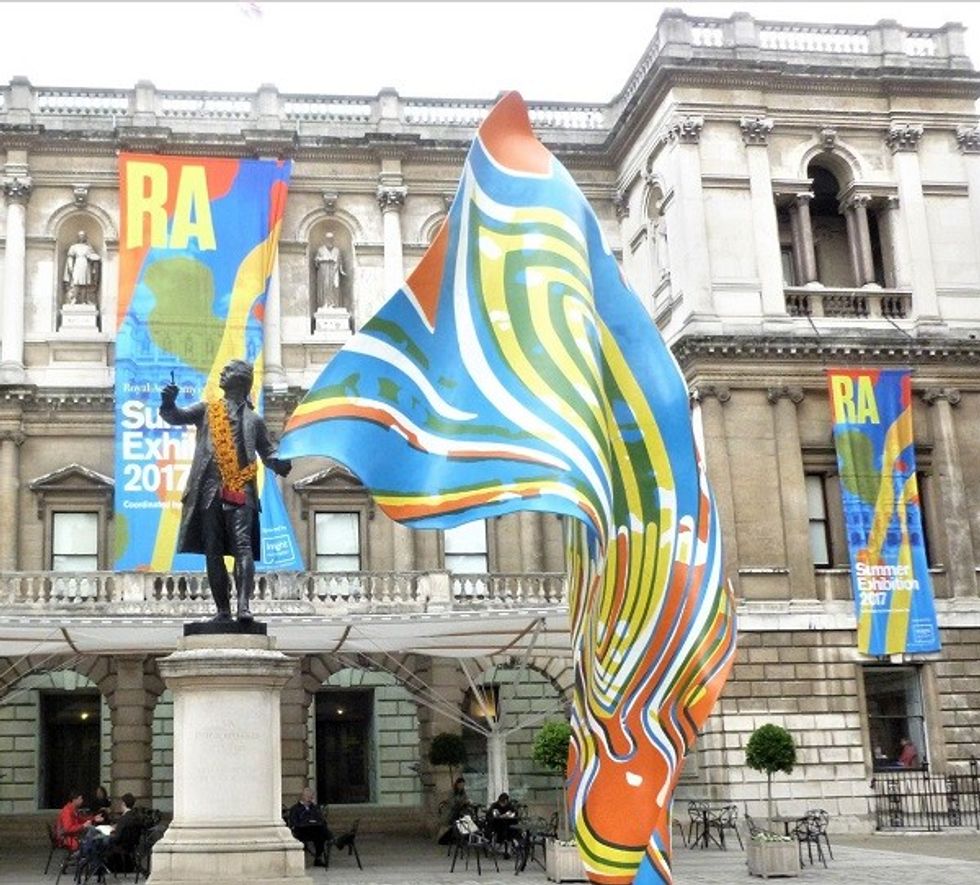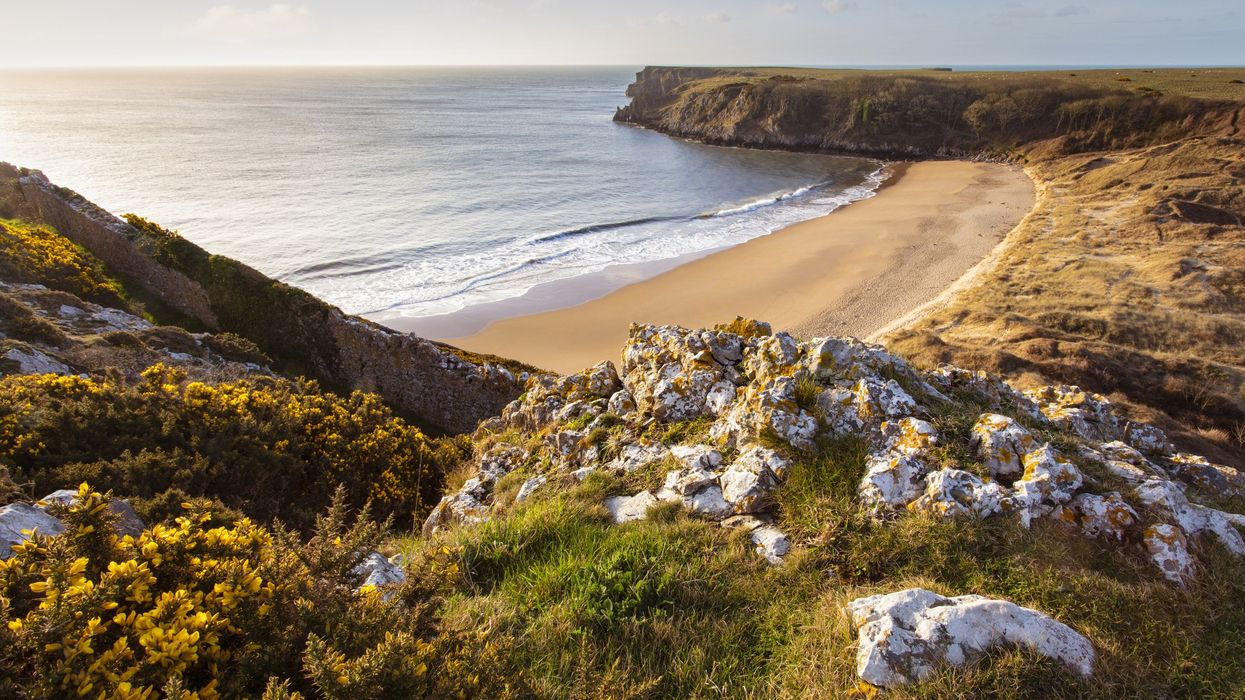By Amit Roy
THE Royal Academy (RA), one of Britain’s premier arts institutions, is ushering in diversity in a major way by choosing an ethnic minority “coordinator” for its famed Summer Exhibition.
It has taken the RA 252 years to get there, but Yinka Shonibare, a distinguished British artist of Nigerian heritage, will this year be the coordinator, whose job is to collaborate with other committee members and give a theme to the exhibition.
It is believed this is the first time that a non-white artist will hold the position.
Shonibare said: “The show’s theme of Reclaiming Magic will celebrate the joy of creating art and give a platform to artists marginalised by the western art narrative.”
Perhaps his appointment will encourage black and Asian artists to enter the world’s largest open submission contemporary art show, which has taken place every year without interruption since 1769.
Out of the 15,000 works submitted, around 1,200 are selected for display.
The exhibition’s main sponsor is Insight Investment, whose CEO, Abdallah Nauphal, said: “The open-entry nature of the Summer Exhibition ensures a diverse array of perspectives. It will be intriguing to see how the artists interpret the extraordinary developments of the past year.”
Shonibare is famous for his Nelson’s Ship in a Bottle installation which stood on Trafalgar Square’s fourth plinth from 2010 to 2012. His Wind Sculpture VI was featured in the courtyard of the RA as part of the 2017 Summer Exhibition. It explored “the notion of harnessing movement through the idea of capturing and freezing a volume of wind in a moment of time”.
In a year which has witnessed much churning because of the Black Lives Matter protests, the RA said Shonibare “plans to include some work that has not been made in a ‘western tradition".
The exhibition generally opens in early June, but due to the pandemic, it has been pushed back to the autumn. It is set to be held between September 22, 2021, and January 2, 2022.

Sundaram Tagore, who owns galleries in New York, Hong Kong and Singapore, told Eastern Eye of his high regard for this year’s coordinator: “Yinka Shonibare is a well-known Nigerian-born British artist. He creates sculptures and installations based on colonialism and related issues. I wanted to show his work in my 2015 Venice Biennale exhibition, but could not secure it on time.”
Shonibare explained his vision: “Reclaiming Magic is an exhibition which seeks a return to the visceral aspects of art making. It will transcend the western canon which formed the foundations of the Royal Academy and western art history’ points of reference. The exhibition will be a celebration of the transformative powers of the magical in art, a return to the ritualistic and the sheer joy of making.”
He added: “Western renaissance art education, modernist and conceptual art practices led to the devaluing of art practices from other cultures in their unmediated forms. This exhibition seeks to restore value to marginalised practices, to reclaim the magic of those works in the context of the Royal Academy. I seek to propose a new pride in the concept of ‘Primitivism’ as an equally valid form of enlightenment alongside other art practices.”
Shonibare was born in London in 1962 and moved to Lagos in Nigeria when he was three. At 16, he returned to London to study fine art, first at the Byam School of Art (now Central Saint Martins College) and then at Goldsmiths College. His father appears to have been like an old-style Indian father, initially at any rate. He wanted his son to get a proper job rather than waste his time on the arts.
The artist recalled: “My father, who passed away about six years ago, was a lawyer, and he expected me to go into the law. But, to his huge disappointment, I went to art school instead. That didn’t go down well at all for years. After I left art school, I was still scrounging for money, while my brother, who is five years younger, was on a salary four times mine. I was managing to earn about £5,000 a year. But, eventually, my father was very proud of me.”
He pointed out: “Middle-class Nigerians lead a culturally very mixed life. My father studied law in Britain, for example. I can speak Yoruba, the Nigerian language, but we had summer holidays in England and Italy. It was a very cosmopolitan lifestyle.”
At the age of 18, Shonibare contracted transverse myelitis, an inflammation of the spinal cord, which resulted in a long-term physical disability where one side of his body is paralysed.
He now describes himself as a ‘post-colonial hybrid’, who creates work that “explores issues of race and class through the media of sculpture, painting, photography, film, tapestries and public works”. Awarded an MBE in 2004, and a CBE in 2019, he was shortlisted for the Turner Prize in 2004 and elected an RA royal academician in 2013.
For the 2017 Summer Exhibition, Shonibare curated room VI when he sought to add diversity by inviting artists from a wide variety of nationalities and backgrounds to show their works.
His Nelson’s Ship in a Bottle sculpture, which was inaugurated by Boris Johnson when he was the mayor of London, considered “the relationship between the birth of the British Empire, made possible in part by Nelson’s victory at the Battle of Trafalgar, and multiculturalism in Britain today”.
The artist said of the piece: “For me it’s a celebration of London’s immense ethnic wealth, giving expression to and honouring the many cultures and ethnicities that are still breathing precious wind into the sails of the United Kingdom.”


















